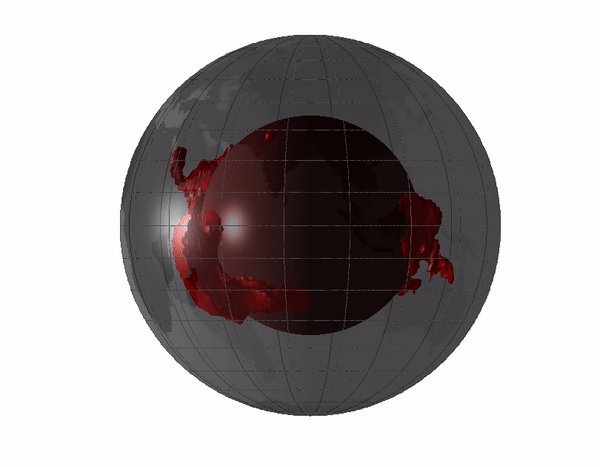Did You Know There Are Giant Blobs in the Center of the Earth?
And of course, they're shrouded in mystery
Hiya!
While humans occupy a lot of space—about half of the landmass on our planet— but the other half remains largely untouched by us. The oceans, too, are only about 20 percent explored — meaning nearly 80 percent is unknown to us. I used to think we grew apathetic toward our planet and instead turned our gaze to the moon, the solar system, and the entire universe.
I once wondered why we know more about Outerspace than our oceans. Then I learned Outerspace is more hospitable and easier to study than our oceans, not to mention the deeper parts of Earth. But now, as technology advances, scientists are learning new ways to penetrate the planet from a safe distance, and they found something unexpected…ginormous blobs near the center of Earth.
Ginormous What?
You read that right. Experts have found ginormous blobs near the center of the planet. The word “blob” may not be the most scientific of terms, but it’s an accurate description. Some scientists called them LLSVP or Large Low Shear Velocity Provinces, but I’m going to call them the Blobs because it’s more fun.
Part of the problem with determining a name for them is that scientists don’t know what they are or what they’re made of. But there’s one sitting beneath Africa and part of the Atlantic Ocean, and another one across the world below the floor of the Pacific Ocean.
Experts believed the Blobs lie at the bottom of the Earth’s rocky mantle, over the molten outer core, and over 1,200 miles (2,000 kilometers) below our feet. These blobs are 100 times higher than Mount Everest and longer than a continent. If they were on the surface with us, they would be so tall that the international space station would have to navigate around them.
So yeah, ginormous.
At the deepest part of the known ocean—the bottom of the Mariana Trench— nearly 7 miles deep, there’s about 1,000 times more pressure or the weight of 50 jumbo jets stacked on top of you. If you think that’s intense, what do you imagine the conditions are like over 1,000 miles below your feet near the molten outer core of our planet?
I’ll tell you what they’re like. The blobs are so deep that even Earth’s elements are compressed and melted beyond recognition. Check out this 3-D gif of the blobs, thanks to the work of seismologist Sanne Cottaar at the University of Cambridge.
Learning more about them is infinitely more complicated than Space, considering the harsh conditions near the center of the Earth. As mentioned, even raw materials become unrecognizable, which means it’s not just us that wouldn’t survive the trip, but any equipment taken along would melt long before reaching its destination.
When and How Were They Found?
Scientists have actually known about the blobs for a while now, longer than I’ve been alive at least. It was during the 1970s that experts first laid eyes on them after inventing seismic tomography. The technology tracks the waves released by an Earthquake as it shakes the planet, then scientists reverse engineer where the waves originated from.



